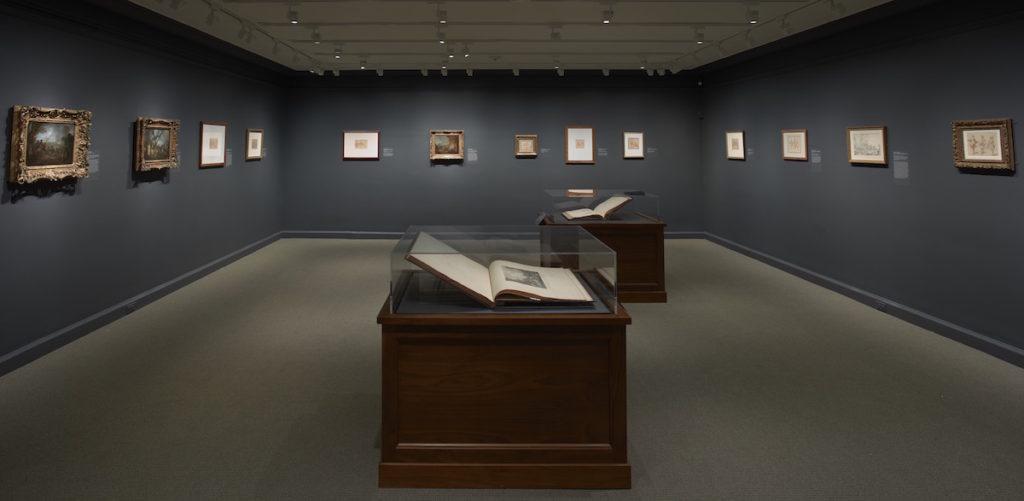
Fig. 1. Jean-Antoine Watteau, The Portal of Valenciennes, ca. 1710–11. Oil on canvas, 32.5 × 40.5 cm (originally in oval frame and later extended). The Frick Collection, New York; purchased with funds from the bequest of Arthemise Redpath, 1991 (91.1.173). Photo: Michael Bodycomb.
The scene is prosaic enough. Seven soldiers are arrayed in the foreground. A crumbling archway stretches above them; there are ramparts in the distance, and more soldiers on the bridge leading there. Just off to the center, two men stand side by side, facing away from each other—the soldier on the left towards a caped sentinel standing next to his wooden guard hut; the other, towards a soldier leaning against the archway. Between this last pair, two more sit smoking pipes, looking nowhere in particular. Another lies flat on his belly, his head buried in the crux of his arm.
Jean-Antoine Watteau probably painted The Portal of Valenciennes (Fig. 1) shortly after his return from a visit to his native Valenciennes in 1710 (though there is no evidence the painting actually depicts the walls of Valenciennes). He made a number of drawings and paintings representing military life around this time and continued to do so until about 1715. Genre scenes of military life proliferated in seventeenth-century Flanders and Holland, and it is clear that Watteau, recognized in the eighteenth century as a peintre flamand, drew on these earlier examples. Yet Watteau’s efforts are set apart by their intimate, humane vision of war. Looking at a work like The Portal of Valenciennes, we have a sense, absent in military paintings of the previous century, of encountering real people. We see men defined not by their role as soldiers but by the essentially human experiences of boredom, camaraderie, and reflection. Watteau executed this and a number of other works with military themes during the disastrous War of the Spanish Succession (1701–14), and when he visited Valenciennes, close to where the battle of Malplaquet had been fought a few months earlier, he would have had close contact with members of the French army. While it is difficult to gauge how directly his drawings and paintings respond to the war, it would be hard to deny that, in their immediacy and intimacy, they register something of its psychic toll.
In contrast to the fêtes galantes, Watteau’s military works are little known and under-studied. So when I was given the chance to curate an exhibition as part of an Anne L. Poulet Curatorial Fellowship at The Frick Collection (the home of The Portal of Valenciennes), I jumped at the opportunity not only to introduce them to a larger public but also to reconsider their significance. The result, Watteau’s Soldiers: Scenes of Military Life in Eighteenth-Century France, opened at the Frick on July 12th.
This perhaps makes it sound much easier than it was. In fact, in the nearly two years between coming up with the idea for the show and its opening, I faced a major problem: I wasn’t sure what I wanted to say about the works. Yet, to my surprise, the very process of organizing the exhibition yielded new insights, and in this note I would like to reflect on how those insights emerged.
Having never worked in a museum before the Frick, I hadn’t given much thought to what it might mean to “think like a curator.” Curating an exhibition made me far more conscious of how the institutional frame for doing art history—and everything that it entails materially, practically, and conceptually—shapes how we go about understanding a work of art. Given my academic training and inclination, my research tends to shuttle between objects and texts, keeping connections to larger cultural and historical currents in the foreground. With an exhibition, however, the balance changes. For practical reasons—locating relevant works, requesting loans, deciding what will go where—the objects come first, and that forced me to shift my priorities in looking.
Most importantly, the apparently routine task of cataloguing all the military works and determining which drawings were used for which paintings, how many times and in which ways, encouraged me to think more deeply about the relationship between Watteau’s drawings and paintings, which, in the limited literature on the military works, are usually treated separately. Watteau’s unusual working methods are, of course, well known. He did not proceed methodically from compositional studies, individual figure studies, and full-scale models to the final painting. Instead, he began by drawing from life, without a specific end in mind. For the most part, when he decided to create a painting, he culled figures from his sketchbooks and arranged them on the canvas in various groups. But little consideration has been given to the meaning of Watteau’s method.
It became clear, however, that it was precisely Watteau’s process that separated his military paintings from their Dutch and Flemish precedents. Watteau shows his soldiers “off duty,” as individuals rather than cogs in a military machine, existing almost in defiance of the disciplinary structure of the modern army. At the same time, they are far from transparent: their postures and attitudes may mark them as interiorized subjects, but the contours and contents of their inner lives are out of reach. In a study like Three Studies of Resting Soldiers (Fig. 2), for example, they seem to have withdrawn into themselves, their faces and bodies yielding no psychological insight. Despite their intimacy—or, rather, because of it—Watteau’s drawings capture the impossibility of ever really knowing the “other.”
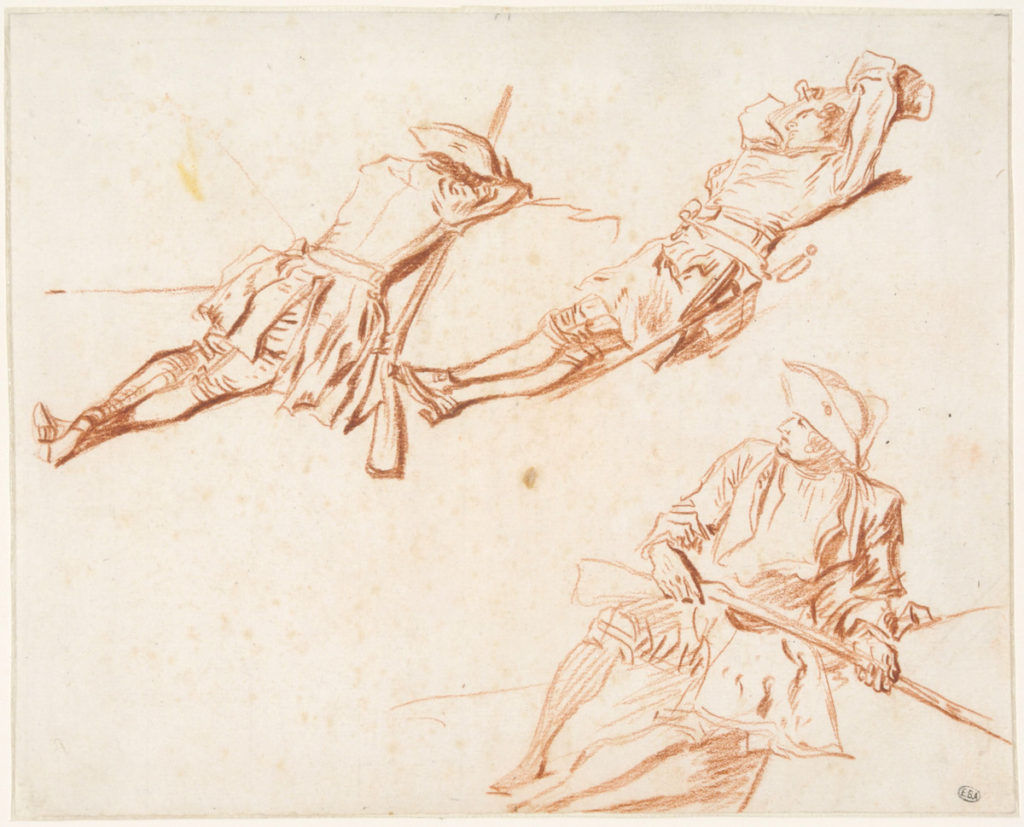
Fig. 2. Jean-Antoine Watteau, Three Studies of Resting Soldiers (recto), ca. 1713–14. Red chalk, 17.5 × 21.7cm. École nationale supérieure des Beaux-Arts, Paris (1608). © Beaux-Arts de Paris, Dist. RMN-Grand Palais / Art Resource, NY.
Seen in light of the drawings, the paintings took on new significance. Because of the unusual way Watteau used his studies, they appear almost like puzzles made from pieces that do not quite fit together. The figures interact, most of the time, yet they look slightly past one another, often gesturing in inscrutable ways. Ripped from their isolation in his sketchbook, they are forced into uneasy contact. For instance, as I studied how Watteau used his drawings for The Portal of Valenciennces, strange disjunctions among the figures became apparent. The two soldiers near the middle look towards the other two soldiers at either end of the painting, but they do not seem actually to connect. This is hardly the prosaic scene it first appears to be. Moving from drawings to painting, I could almost see Watteau’s process pulling at the seams of pictorial cohesion, introducing the psychological opacity of the drawings into the affective logic of the paintings. Through his unusual working method he forged a vision of a troubled and uneasy social commerce, which, for me, marks the modernity of his representation of military life.
If there was ever a case for the epistemological specificity of art making, as a distinct way of apprehending the world and the people in it, this is it. Watteau’s drawings and paintings do not just illustrate a certain understanding of self and society. Their point of view emerged in the initial stages of making and continued to structure his process through to the final paintings. In my essay for the catalogue I drew on eighteenth-century art theory, philosophy, and military history to make sense of the larger cultural context that gave Watteau’s working method meaning, but the vision of his military works is irreducible to any text. No doubt the current art-historical methodological interest in process influenced my thinking, but, if the exhibition had not compelled me to understand the drawings and paintings on their own terms, I probably wouldn’t have appreciated the importance of Watteau’s working method to the same extent.
How does all this translate into an exhibition? Even when prioritizing objects for the show, I gravitated back to the larger intellectual and cultural questions that drive most of my research. But in an exhibition you can’t make an argument as you would in an essay—you can’t proceed deductively or introduce supporting evidence to build a case. Or at least you can’t without subjecting visitors to numbing amounts of didactic text. My ideas about Watteau’s works and his working method, then, which I explore in depth in the catalogue essay, became more of a frame for thinking about the story I wanted to tell with the objects.
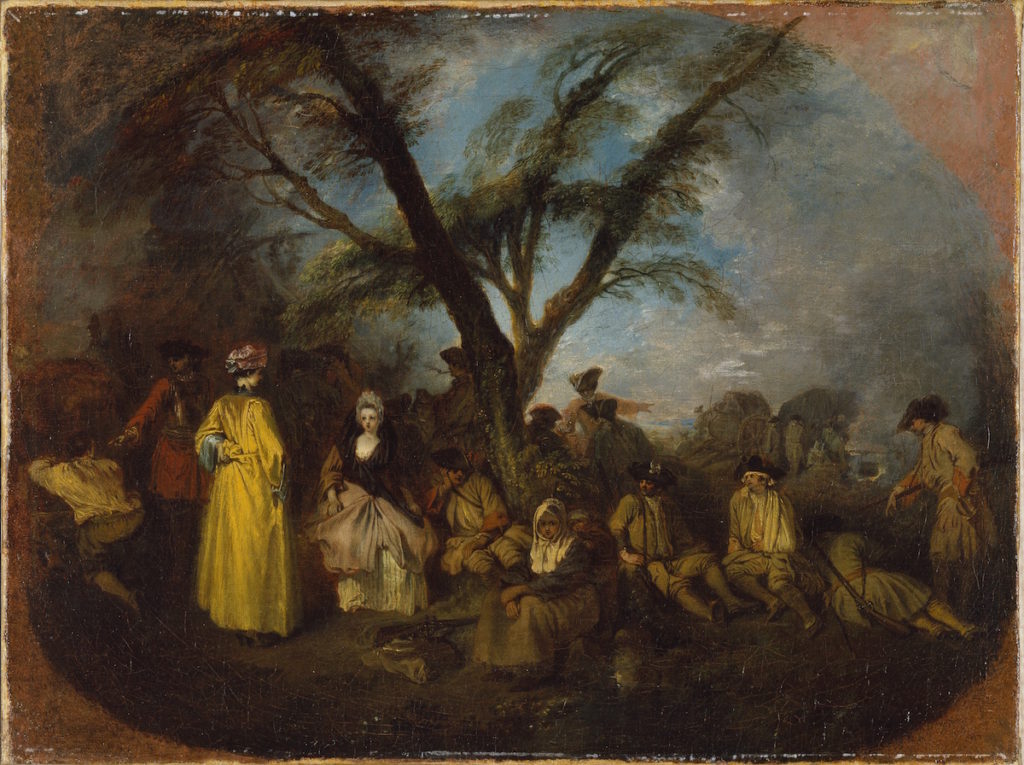
Fig. 3. Jean-Antoine Watteau, The Halt, ca. 1710. Oil on canvas, 32 × 42.5 cm (originally in oval frame and later extended). Museo Thyssen-Bornemisza, Madrid. © Museo Thyssen-Bornemisza, Madrid.
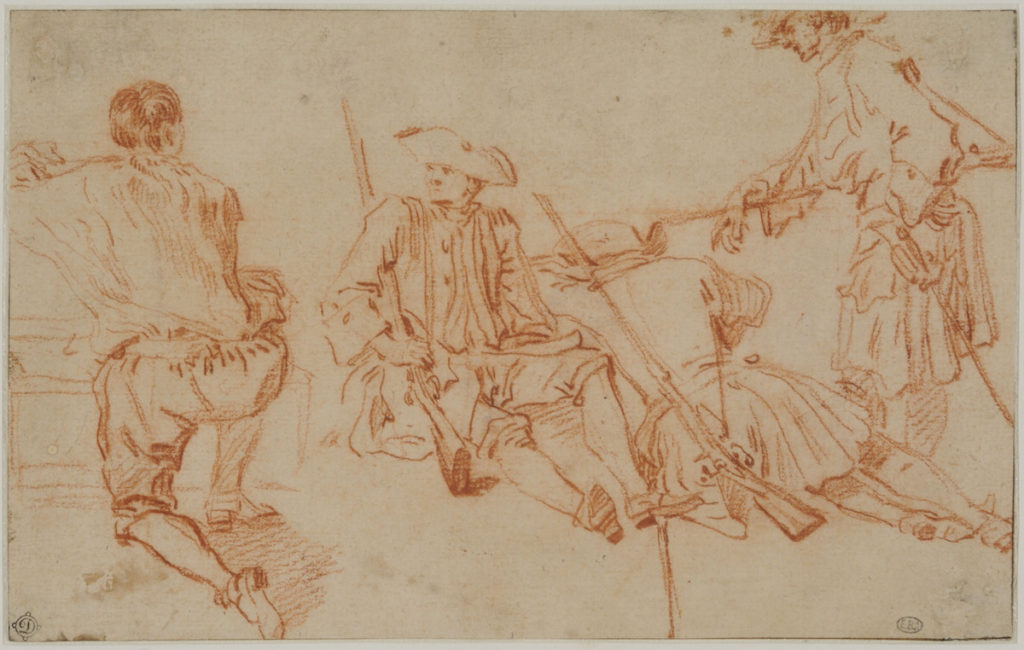
Fig. 4. Jean-Antoine Watteau, Three Studies of a Soldier and a Kneeling Man, ca. 1710. Red chalk, within brown ink framing lines, 12.2 × 19.5 cm. École nationale supérieure des Beaux-Arts, Paris (1605). © Beaux-Arts de Paris, Dist. RMN-Grand Palais / Art Resource, NY.
In considering which objects I wanted to include and how I wanted them arranged, I stripped away the layers of text and context I had gathered around them and returned to the objects themselves. If nothing else, I wanted visitors to the exhibition to appreciate that Watteau’s working methods were unusual and that they are integral to his vision of military life. Only seven of his military paintings survive, and three of those are in Russia and cannot be lent, so I built the show around the four we could display—The Frick’s Portal of Valenciennes (Fig. 1); The Line of March (York Art Gallery) and The Halt (Thyssen-Bornemisza) (Fig. 3), which likely were pendants; and the recently rediscovered Supply Train (private collection)—as well as two prints after now-lost paintings (probably also pendants), a first state etching of The Recruits Going to Join the March by Watteau’s own hand and an engraving of Halt of a Detachment (both from the Met). I then chose a selection of thirteen drawings which, for the most part, featured figures used for the paintings on view; many of the drawings and paintings, such as Three Studies of a Soldier and a Kneeling Man (Fig. 4) and The Halt, are reunited for the first time since they were created. Most Watteau shows I’ve seen have separated paintings and drawings, but for me it was particularly important to juxtapose them so visitors could understand how Watteau employed his studies and appreciate how his motifs took on new life as they traveled from sketch to painting.
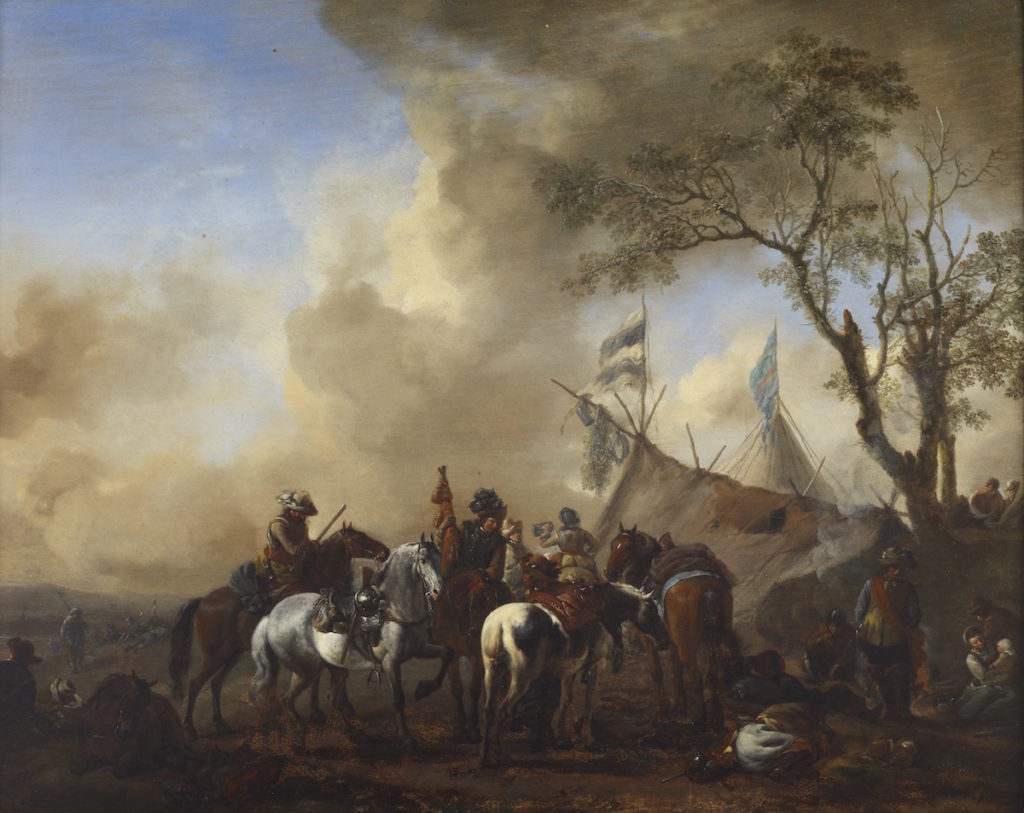
Fig. 5. Philips Wouwerman, The Cavalry Camp, 1638–68. Oil on oak panel, 42.5 × 52.7 cm. The Frick Collection; Henry Clay Frick Bequest (1901.1.136). Photo: Michael Bodycomb.
To underscore the distinctiveness of Watteau’s vision, I wanted to include works by his predecessors and followers. Luckily, hanging in the director’s office at the Frick was a cavalry camp scene by Philips Wouwerman (Fig. 5), the leading seventeenth-century Dutch painter of military genre scenes and one of the most sought-after artists in early eighteenth-century Paris. Its placid, harmonious representation of life in a military camp provided the perfect contrast with Watteau’s. Just as fortunately, there is a camp scene by Watteau’s follower Nicolas Lancret in a private collection in New York, whose owner, Lancret scholar Mary Tavener Holmes, generously agreed to lend it. The painting even features figures taken directly from his master, yet its effect is entirely different—charming, but with little of Watteau’s psychological acuity.
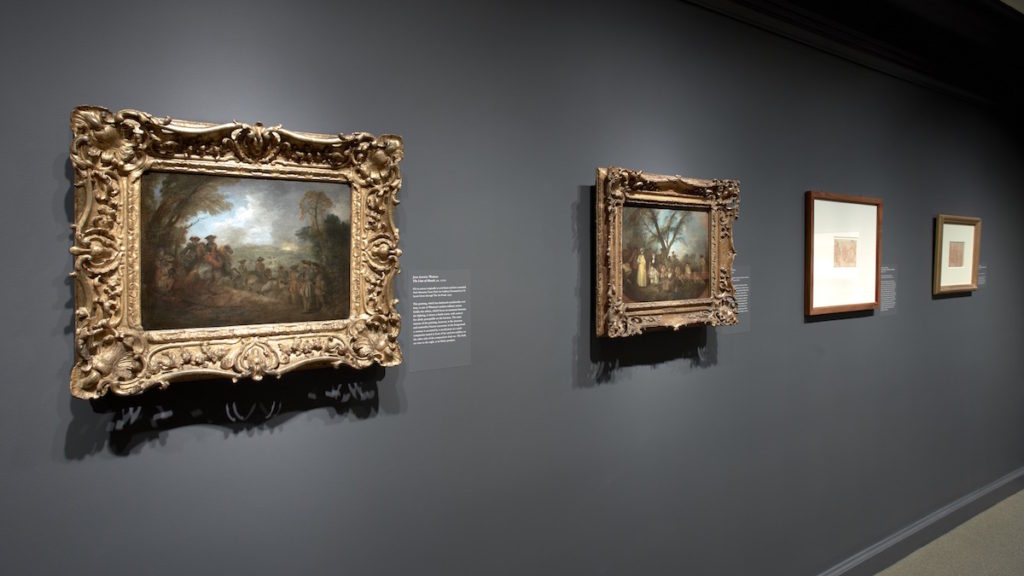
Gallery installation showing the pendants, The Line of March and The Halt, and related drawings. Photo: Michael Bodycomb.
I kept wall text minimal, just enough to frame a narrative and guide people through the show without forestalling other interpretations or experiences. I wanted the objects to tell their own story, and, while I hope visitors might arrive at some of the same conclusions I came to, I think any exhibition should be open ended. Ideally, I hope the experience of the exhibition will encourage visitors themselves to “think like curators,” inviting them to consider the drawings, paintings, and prints on their own terms and how they relate to each other. Above all, though, the goal is to generate more discussion about these fascinating yet little-studied objects.
Aaron Wile is the 2014–2016 Anne L. Poulet Curatorial Fellow at The Frick Collection and a PhD candidate in History of Art and Architecture at Harvard University. Watteau’s Soldiers: Scenes of Military Life in Eighteenth-Century France is on view at the Frick Collection from July 12 to October 2, 2016.
Acknowledgements: Thanks to Caitlin Henningsen, Adam Jasienski, Oliver Wunsch, and the editors of Journal18 for comments.
Cite this note as: Aaron Wile, “Curating Watteau’s Soldiers”, Journal18 (July 2016), https://www.journal18.org/697
Licence: CC BY-NC

